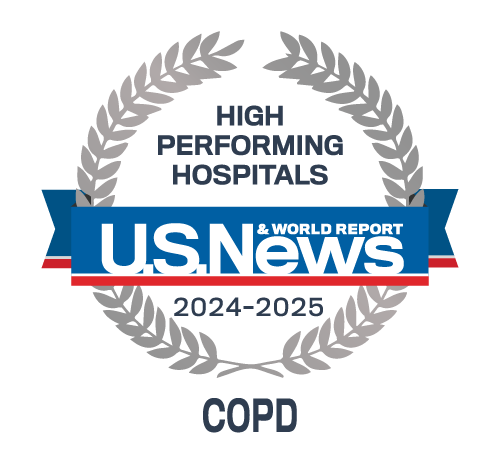Pulmonary Testing
The team at University of Maryland Upper Chesapeake Health Pulmonary Care and Sleep Medicine performs comprehensive, safe, up-to-date testing to see how well your lungs are working, make a diagnosis, and guide and monitor your treatment.
Pulmonary Function Test
There are a number of reasons why you might need a pulmonary function test. It might be required before you undergo surgery (such as an abdominal or lung procedure), or we may use it to evaluate how well your treatment is working.
Generally, we use pulmonary function tests to look at:
- How much air your lungs can hold
- How well air moves in and out of your lungs
- How well your lungs move oxygen into your bloodstream
We also use these tests to screen for conditions such as:
- Asthma
- COPD
- Chronic bronchitis
- Pulmonary fibrosis
Pulmonary function tests are noninvasive and generally painless—no tools or instruments need to be placed in your body. You may need a test if you:
- Had an abnormal chest x-ray
- Have a respiratory infection
- Have symptoms that indicate a breathing problem (shortness of breath, wheezing, coughing, etc.)
Types of Pulmonary Function Testing
Spirometry
The most common and basic type of lung function test, our team uses it to measure the rate of air flow in the lungs. Specifically, we look to see how much and how quickly you move air in and out of your lungs. You will be blowing into a tube connected to a machine called a spirometer.
Lung Volume Test
Also known as body plethysmography, this test measures your lung capacity (the amount of air your lungs can hold). We use it to find out how much air is in your lungs after you take in a deep breath and how much remains after you breathe out as much as you can.
During this test, you breathe through a mouthpiece while in a small, air-tight booth or closed space with clear walls (picture a phone booth).
DLCO (Diffusing Capacity) Test
This measures how well oxygen moves from your lungs into your bloodstream.
Like spirometry, this test requires you to breathe into a mouthpiece connected to a machine.
Bronchoscopy
We use this procedure to look inside your airways and lungs in order to determine if you have a lung disease. We may also use it during the treatment of some lung conditions.
During bronchoscopy, a thin tube called a bronchoscope is passed through your nose or mouth, down your throat and into your lungs.
A flexible bronchoscope is commonly used for this procedure. In some situations, like if there's a lot of bleeding in your lungs or something is stuck in your airway, a firm bronchoscope may be needed.
How to Prepare
Prior to your pulmonary test, we recommend that you avoid:
- Use of inhaler medications (such as Albuterol) within two hours of testing unless absolutely necessary (inhaler may be administered during testing as needed)
- Eating heavy meals and drinking caffeinated beverages
- Smoking
- Wearing tight clothing
We also recommend asking your doctor whether medications you are taking should be paused.


